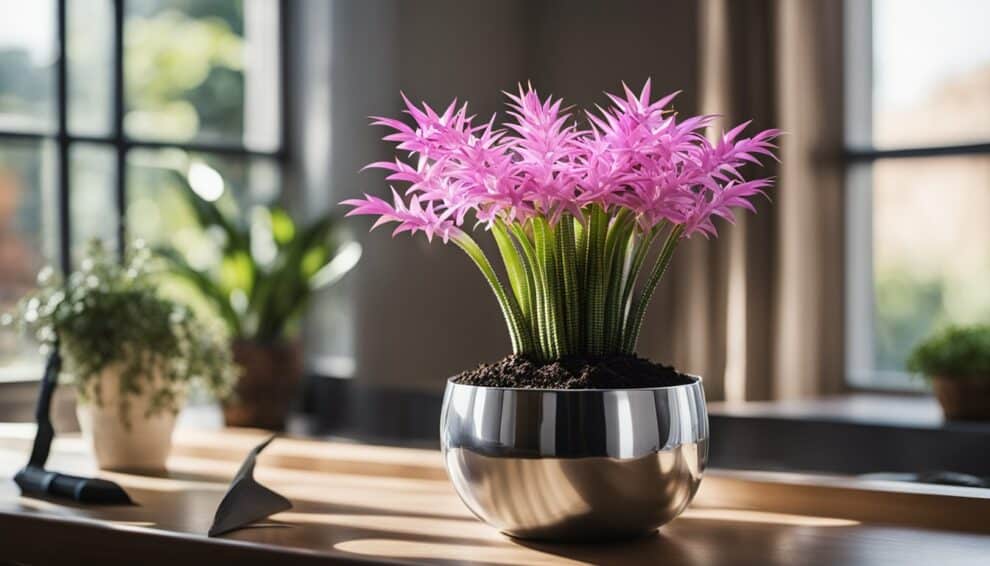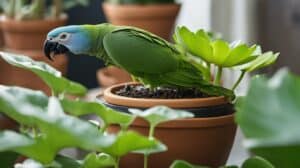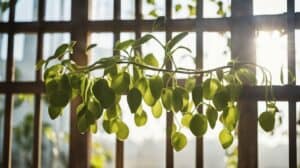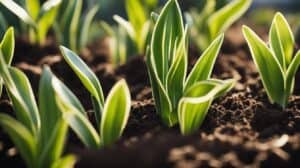The Silver Vase Plant, scientifically known as Aechmea Fasciata, is a stunning and unique plant that can add a touch of exoticism to any indoor space.
This plant is native to Brazil and belongs to the Bromeliaceae family.
Its striking appearance, with its silver-grey leaves and bright pink flower spike, makes it a popular choice for plant lovers.

Propagating the Silver Vase Plant can be a rewarding experience for those who want to expand their plant collection or share this beautiful plant with friends and family.
Propagation can be done through offsets, which are small plantlets that grow from the base of the mother plant.
With proper care and attention, these offsets can grow into mature plants that will produce their own offsets in time.
This guide will provide step-by-step instructions on how to propagate and care for the Silver Vase Plant, so that you can enjoy this stunning plant for years to come.
Understanding Silver Vase Plant
Species Overview
The Silver Vase Plant, scientifically known as Aechmea Fasciata, is a species of bromeliad native to Brazil.
It is also commonly referred to as the Urn Plant due to its vase-like shape.
The plant has long, slender leaves that are green in color and have a silver-gray banding pattern.
The leaves grow in a rosette pattern, forming a central cup or vase that can hold water.
The Silver Vase Plant is a slow-growing plant that can reach up to 2-3 feet in height and 2-3 feet in width.
It produces a tall flower spike that can grow up to 2-3 feet in height and is covered in small, bright pink flowers.
The flowers bloom for several months and are followed by small, green berries.
Ideal Growing Conditions
The Silver Vase Plant is a relatively easy plant to care for and can be grown indoors or outdoors.
It prefers bright, indirect light and should be kept out of direct sunlight. The plant can tolerate low light conditions but may not flower as well.
The plant prefers warm temperatures between 60-80°F and high humidity levels.
It can be grown in a well-draining potting mix or mounted on a piece of bark or wood.
The central cup of the plant should be filled with water, and the water should be changed weekly to prevent the growth of bacteria.
The Silver Vase Plant is a slow-growing plant and does not require frequent fertilization.
It can be fertilized with a balanced, water-soluble fertilizer once every 2-3 months during the growing season.
In summary, the Silver Vase Plant is a beautiful and easy-to-care-for plant that can add a touch of tropical flair to any indoor or outdoor space.
With the right growing conditions, this plant can thrive and produce beautiful pink flowers that will brighten up any room.
Propagation Techniques

Aechmea Fasciata, commonly known as the Silver Vase Plant, is a beautiful and exotic houseplant that can be propagated through various methods.
Below are the three main propagation techniques for Aechmea Fasciata.
Division Method
One of the easiest and most common methods of propagating Aechmea Fasciata is through division.
This method involves separating the plant into smaller sections, each with its own roots and leaves.
To do this, gently remove the plant from its pot and carefully separate the offsets or pups from the mother plant.
Make sure each pup has a well-developed root system and a few leaves.
Plant each pup in a separate pot filled with a well-draining potting mix, and water thoroughly.
Offset Separation
Offset separation is another method of propagating Aechmea Fasciata.
This method involves removing the offsets or pups that grow at the base of the mother plant, without separating the mother plant itself.
To do this, gently pull the offsets away from the mother plant, making sure each pup has a well-developed root system and a few leaves.
Plant each pup in a separate pot filled with a well-draining potting mix, and water thoroughly.
Seed Germination
Seed germination is a less common method of propagating Aechmea Fasciata, but it can be an interesting and rewarding process.
To propagate the plant through seed germination, collect the seeds from the mother plant and sow them in a well-draining potting mix.
Cover the seeds lightly with soil and keep them moist. Place the pot in a warm and bright location, but avoid direct sunlight.
The seeds should germinate within a few weeks, and once they have developed a few leaves, transplant them into separate pots.
By using one of these propagation techniques, you can easily increase your collection of Aechmea Fasciata plants.
With proper care and attention, your new plants will thrive and add beauty to your home.
Post-Propagation Care

After successfully propagating the Silver Vase Plant, it is important to provide proper care to ensure its healthy growth.
Here are some important aspects of post-propagation care:
Potting and Soil Requirements
The Silver Vase Plant requires well-draining soil that is rich in organic matter.
It is recommended to use a mix of peat moss, perlite, and bark to provide the necessary drainage and nutrients.
When potting the plant, make sure to choose a container that is slightly larger than the root ball to allow for growth.
Watering and Feeding
The Silver Vase Plant requires consistent moisture, but it is important not to overwater as this can lead to root rot.
Water the plant when the top inch of soil feels dry to the touch.
During the growing season, fertilize the plant every two weeks with a balanced fertilizer to promote healthy growth.
Light and Temperature
The Silver Vase Plant thrives in bright, indirect light. Avoid placing the plant in direct sunlight as this can scorch the leaves.
The ideal temperature range for the plant is between 60-80°F (15-27°C). Avoid placing the plant in areas with cold drafts or extreme temperatures.
By following these guidelines, the Silver Vase Plant will continue to thrive and add beauty to any space.
Frequently Asked Questions

What are the steps for propagating a Silver Vase plant from offsets?
Propagating a Silver Vase plant from offsets is a simple process. First, locate the offsets at the base of the parent plant.
Then, gently separate the offsets from the parent plant using a sharp, sterile knife.
Afterward, plant the offsets in a well-draining soil mix and water them thoroughly.
Place the new plants in a bright, indirect light location and wait for them to root and establish.
How often should I water my Aechmea fasciata during propagation?
During propagation, it’s essential to keep the soil moist but not waterlogged.
Water the plant once a week or as needed to keep the soil from drying out completely.
Overwatering can lead to root rot and other problems, so it’s crucial to monitor the soil moisture level carefully.
What is the ideal temperature range for growing a Silver Vase Bromeliad?
Silver Vase Bromeliads thrive in temperatures between 60 and 80 degrees Fahrenheit.
They can tolerate slightly lower temperatures, but they should be kept away from cold drafts and frost.
In hot weather, it’s essential to keep the plant in a location with shade or filtered sunlight to prevent the leaves from scorching.
Can Aechmea fasciata be grown indoors, and if so, what are the best practices?
Yes, Aechmea fasciata can be grown indoors, but they require bright, indirect light and proper air circulation.
Place the plant near a window that receives morning or evening sun, but avoid direct sunlight.
It’s also essential to keep the soil moist but not waterlogged and to fertilize the plant monthly during the growing season.
During which season is it best to propagate the Silver Vase plant?
The best time to propagate the Silver Vase plant is during the spring or summer months when the plant is actively growing.
Propagation during the dormant season can result in slow or stunted growth, and the plant may take longer to establish.
What are some common uses for Silver Vase Bromeliads in home decor?
Silver Vase Bromeliads are popular in home decor because of their striking appearance and low maintenance requirements.
They make excellent accent plants for tabletops, shelves, or mantels and are often used in modern or minimalist interior design.
They can also be used in mixed container gardens or as a focal point in a room.













